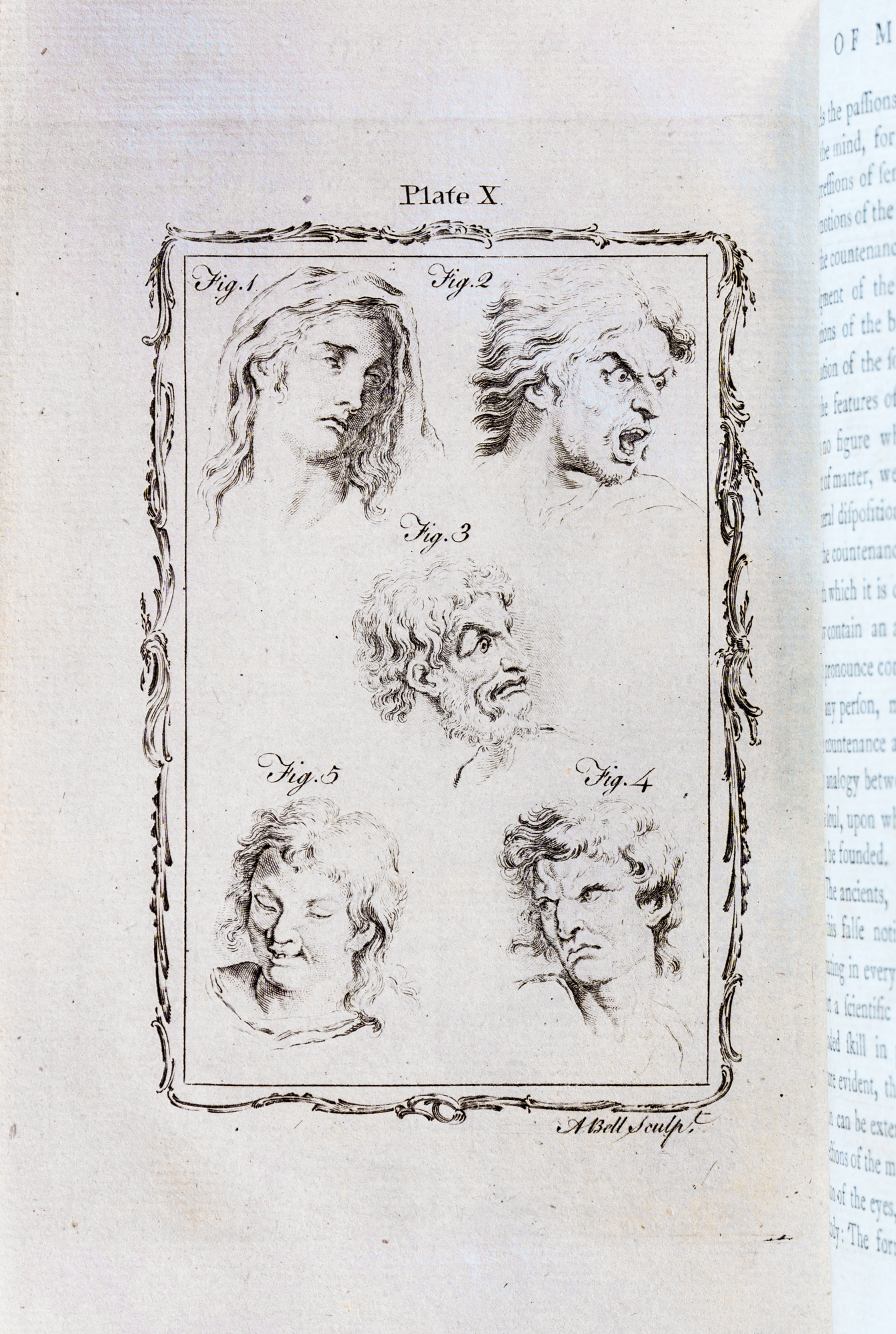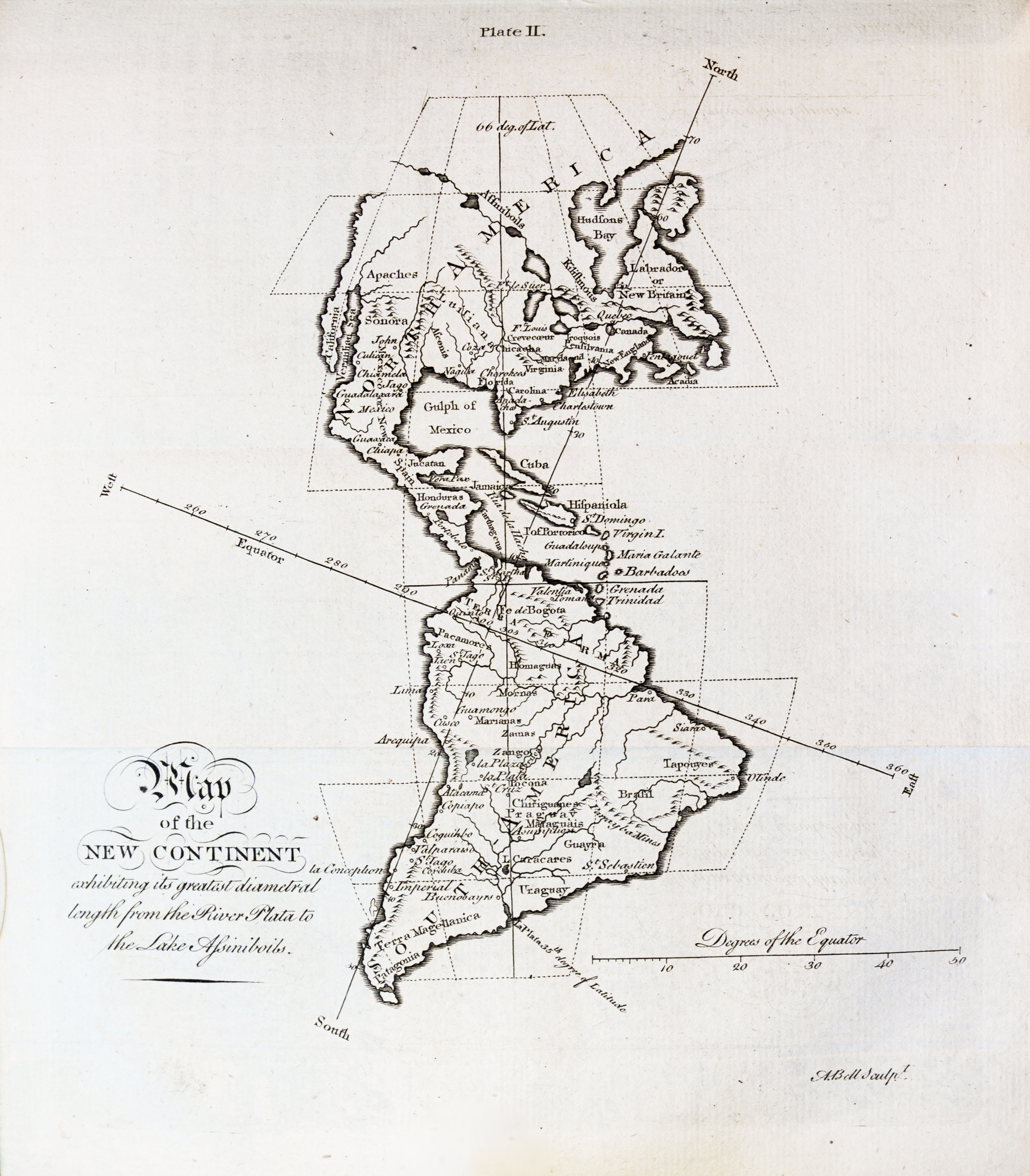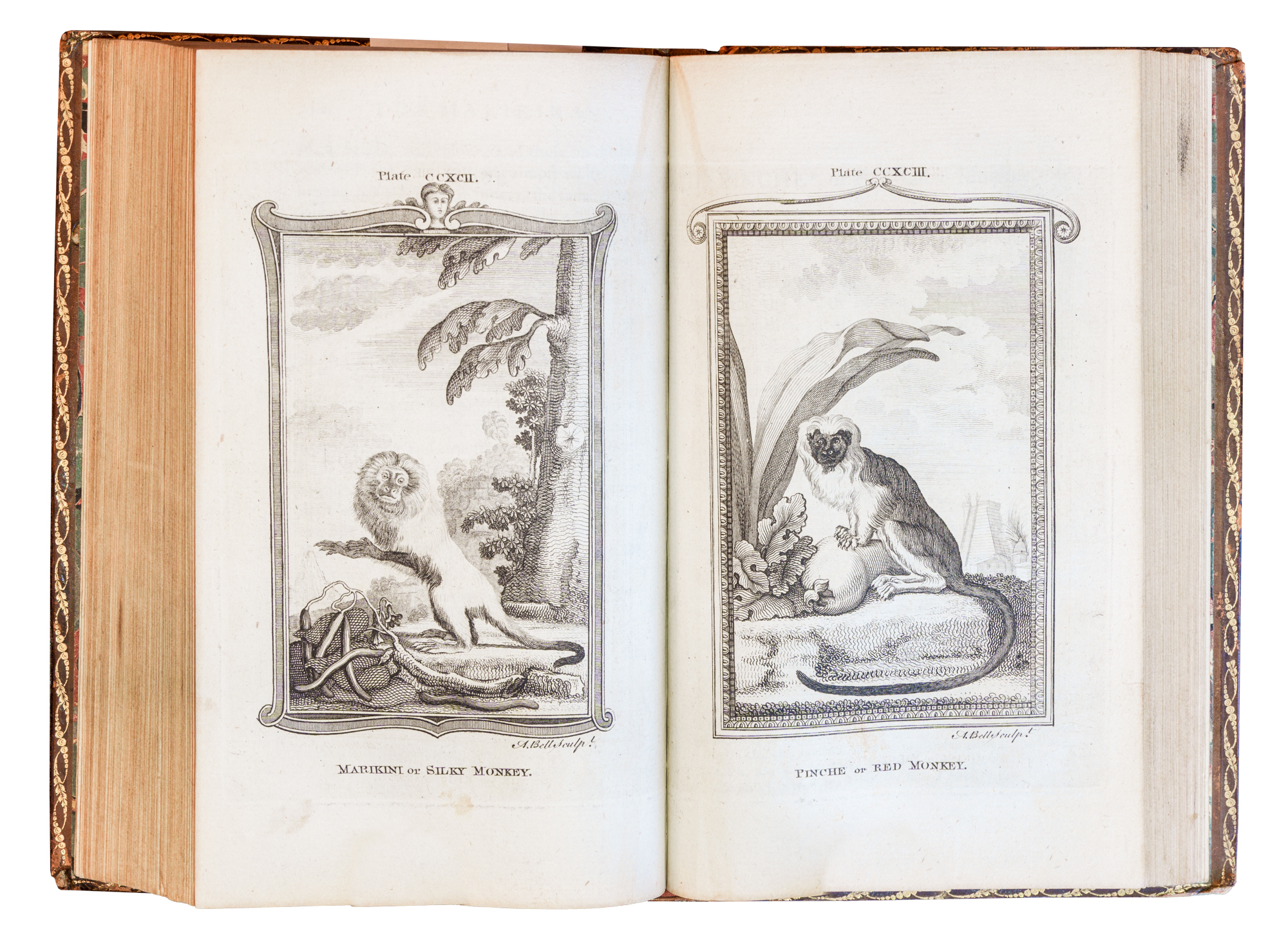
Comte de Buffon's Natural history, general and particular Illustrated with above 300 Copperplates, in 9 volumes was published in 1785. From the collection of Thomas Gill, this is an English translation with occasional notes and observations by William Smellie. Buffon was the greatest naturalist of his time and some of his thoughts on how the world developed pre - dated those of Charles Darwin by 100 years. These RGSSA volumes are of historical significance for their early date of publication and the renown and influence of their author.
Georges-Louis Leclerc, Comte de Buffon (1707 –1788) was a French naturalist, mathematician, cosmologist and encyclopaedist. His publications influenced the next two generations of naturalists in Europe. In 1739 he was appointed director of the Jardin du Roi (later the Jardin des plants) in Paris a position he held all his life turning it into a major research centre and greatly enlarging it.
Buffon published 35 quarto volumes of his Histoire naturelle during his lifetime, and this 2nd edition of nine volumes was published after his death. William Smellie (1740-1795), who was a noted Scottish encyclopaedist and naturalist, gained further renown for his English translation of the already-famous Histoire Naturelle.
This RGSSA set of nine volumes, is thought to be the only one held in Australian libraries, as listed on Libraries Australia.

